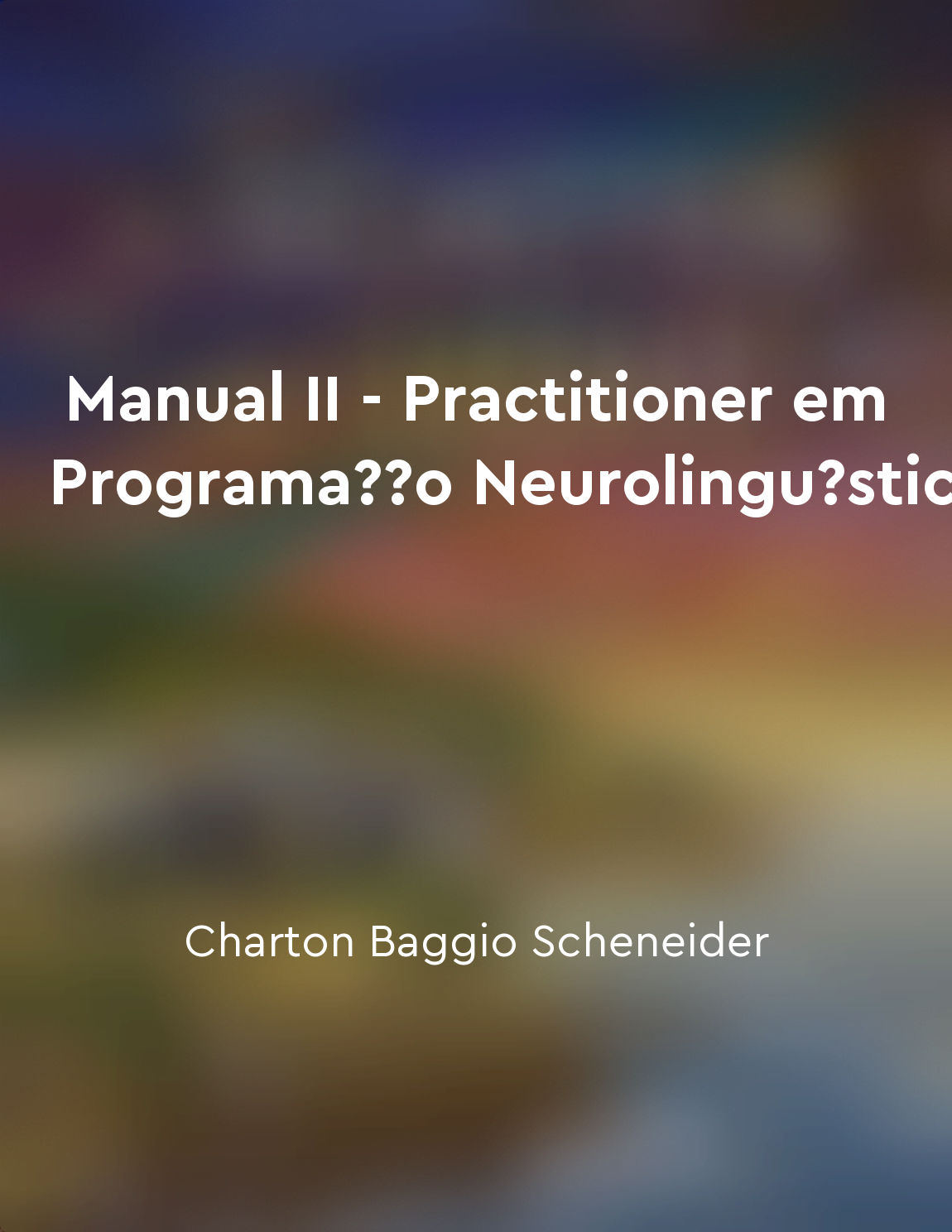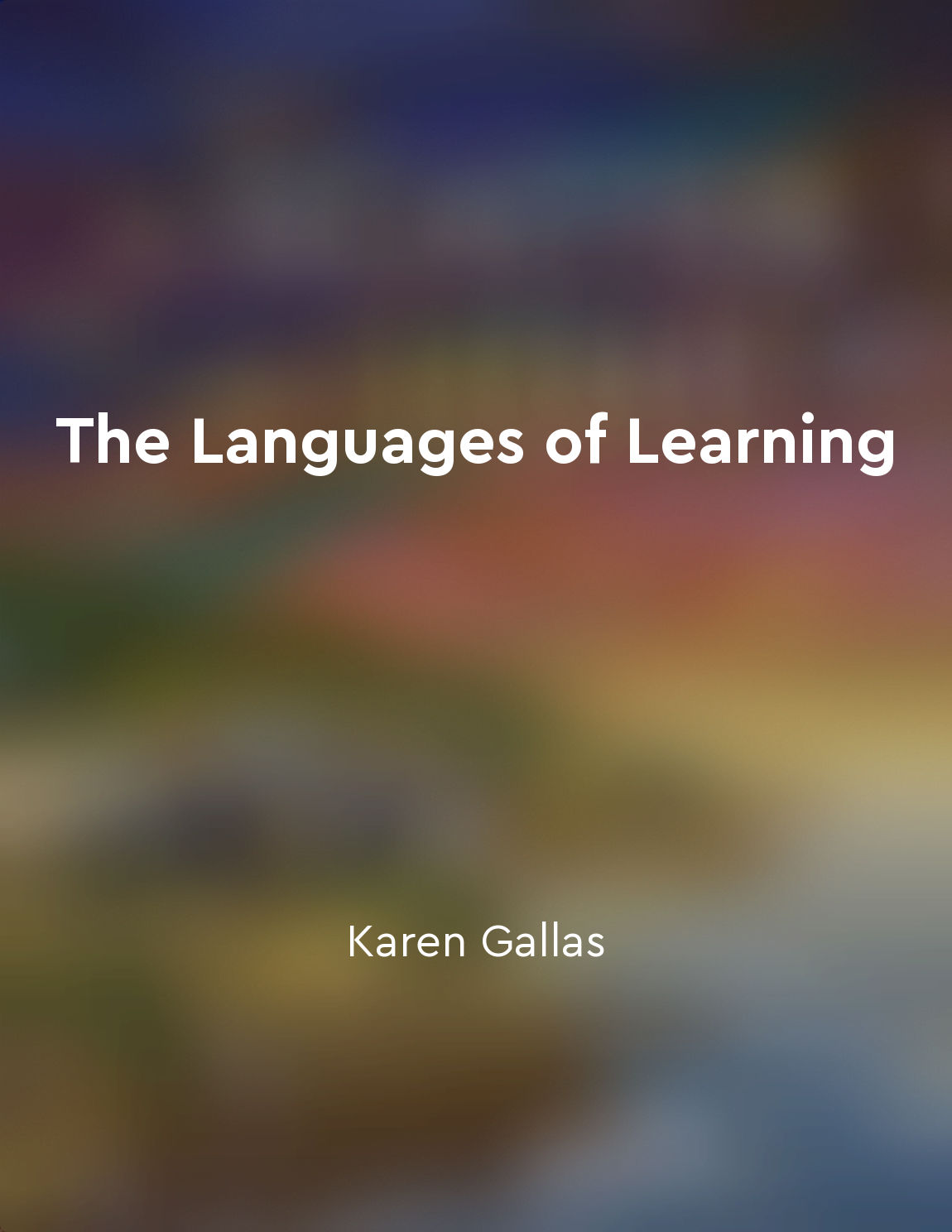Children's languages of learning reveal their thoughts and emotions from "summary" of The Languages of Learning by Karen Gallas
In observing children as they engage in various activities, we can gain deep insights into their inner world. The ways in which they approach learning tasks, the questions they ask, the stories they tell, and the connections they make all provide valuable clues about their thoughts and emotions. These languages of learning serve as windows into their minds, allowing us to better understand their unique perspectives and experiences. Children often use their languages of learning to communicate their curiosities, interests, and concerns. Through their play, their drawings, and their interactions with peers and adults, they express their desires to explore, create, and understand the world around them. By paying close attention to these languages, we can uncover the meaning behind their actions and words, gaining valuable insights into their motivations and aspirations. Furthermore, children's languages of learning reveal their emotional landscapes, offering glimpses into their joys, fears, and frustrations. The ways in which they engage with challenges, setbacks, and successes provide important clues about their emotional well-being and resilience. By tuning into these emotional cues, we can offer them the support and encouragement they need to navigate the complex terrain of learning and growth.- Children's languages of learning are rich and multifaceted, reflecting the depth and complexity of their inner worlds. By listening attentively to these languages, we can forge deeper connections with children, fostering environments that nurture their intellectual, emotional, and social development. Through this process of active listening and observation, we can create meaningful learning experiences that honor and celebrate the unique voices of each child, empowering them to become confident, curious, and compassionate learners.
Similar Posts
Lessons learned from childhood experiences
As a youngster, I was always eager to explore the world around me. Whether it was investigating the depths of the basement or v...
Embracing the power of imagination
The power of imagination is a force that knows no bounds. It is the ability to create worlds within worlds, to envision the uns...

The study of language involves analyzing sound patterns, word meanings, and sentence structures
The study of language is a multifaceted field that encompasses various aspects of communication. One fundamental aspect of this...

The role of perception in shaping reality
Perception plays a crucial role in shaping our reality. It is through our perception that we interpret the world around us and ...

Cultivate a sense of curiosity
When we talk about cultivating a sense of curiosity in children, we are referring to the importance of encouraging them to ask ...
Suppressing emotions can lead to physical and emotional distress
When we suppress our emotions, we attempt to contain them within ourselves, often because we believe they are inappropriate or ...

Immersion in Englishspeaking environments
To truly learn a language, one must immerse themselves in environments where that language is spoken. This is the most effectiv...
Understanding our instincts can lead to greater selfawareness and empathy
Instincts are deeply ingrained in our biological makeup, influencing our behavior and decisions on a subconscious level. By tak...
Embrace the joy of learning new words with curiosity
Learning new words can be an enjoyable and enriching experience if approached with an open mind and a sense of curiosity. Inste...

Utilizing anchoring techniques for positive association
Anchoring techniques are a powerful tool in the practice of Neuro-linguistic Programming (NLP). By creating a positive associat...


